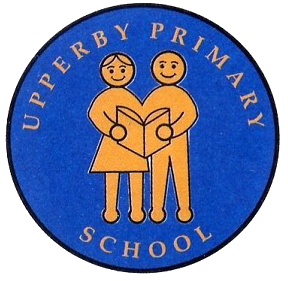Art and Design

Our Art & Design subject leader is Miss Greenaway.
Intent
At Upperby Primary School we intend children should master Art and Design to such an extent that they can go on to have careers within Art and Design and to make use of art effectively in their everyday lives.
Our children will be taught Art and Design in a way that ensures progression of skills and follows a sequence to build on previous learning.
Our children will gain experience and develop skills of a wide range of formal elements of art in a way that will enhance their learning opportunities, enabling them to use art and design across a range of subjects to be creative, solve problems and ensure they make progress.
Implementation
EYFS
Through well-resourced continuous provision and child centered learning opportunities, children in our nursery and reception classes develop their skills through exploration of mark making, materials, construction and evaluation. They also learn how to play and communicate imaginatively by developing narratives for role play, building play scenarios and working collaboratively with their peers.
Progress in the early years is assessed using the ‘Development Matters in the EYFS’ guidance and is recorded using the school’s Scholar Pack assessment system.
EYFS, KS1 and KS2 - Kapow
Years Rec-6 follow the Kapow art scheme. Kapow provides a broad and balanced curriculum which ensures progression of skills and covers all aspects of the National Curriculum. Through teacher demonstrations and practical experiences children build on previous learning to develop and refine the five key skills detailed below.
Generating ideas – To explore ideas, record feelings and experiences.
Making – procedural knowledge of making in art, craft and design.
Evaluating – evaluate and analyse own and others work.
Knowledge – To learn about great artists, craft and design. To learn how artists use the formal elements of art.
Formal Elements – line, shape, form, tone, texture, pattern, colour and composition. To know how they are organised in a piece of art determines what the finished piece will look like.
Impact
The pupils are assessed against the performance descriptors for each year groups which have been carefully mapped out. Skills and understanding in Art are progressive and build year on year. Assessment information is used to inform further curriculum developments and provision is adapted accordingly. The subject leader monitors assessments and provides support for staff to ensure continued progress.
Kapow
Since the summer of 2021, Upperby Primary School has been using the Kapow Primary Scheme of Work to support our delivery of the Art and Design National Curriculum.
Through Kapow children learn the building blocks to be successful in:
- Generating ideas
- Making skills in art, craft and design
- Evaluation of their own outcomes and those of peers and famous artists
- Knowledge of artists and processes
Upperby Primary School is bursting with artistic talent which we celebrate with whole school art projects, classroom and corridor displays and entering competitions such as the Cumberland Show.
Sketchbook Gallery
Sketchbooks are a vital way of recording thoughts, developing ideas, sharing with peers and refining new techniques.
Take a look through some of the wonderful work going on in our sketchbooks!



SLIDESHOW
Whole School Project 2020
Celebrating the work of artist
Jimmy Nelson
'I take pictures. I make images. Unlike film, which overwhelms you with movement and sound, defining the ongoing moment, a photograph just sits there quietly while you decide what it is saying.'
Jimmy Nelson, jimmynelson.com
For our most recent art project the children were introduced to work of photographer Jimmy Nelson and his collection titled
'Blink. And they're gone.'
With 'Blink. And they're gone.' Nelson is sending a warning of the risk of losing global cultural heritage by squandering the cultural identities of the last indigenous peoples. The photographer wants to help preserve cultural diversity by issuing the caution: 'BLINK. AND THEY'RE GONE'.
jimmynelsonfoundation.com


Nelson has made it his life's work to attain understanding and respect for the world's indigenous cultures through his photography. He presents these cultures in an aspirational and stylized way.
However, Nelson believes that the beautification of indigenous cultures is an important message for greater humanity - and one that is needed now more than ever.
Each year group was asked to create a response to the collection of images, to engage in thoughtful discussions about the intent of the images and the way they have been taken, how they been posed, the composition and the use of colour.
SLIDESHOW
The display shows a variety of different approaches from each year group. Inspired by the rich colours displayed in the images, our youngest children explored colour and colour mixing, repeating patterns and weaving. Other year groups were influenced by the head dresses and adornments worn by the indigenous people.
After looking at the images of the indigenous tribes and their families, groups of our junior children explored the theme of our school as a community, our 'school family'.
Where would they choose to pose their family photograph and what items or clothing would they choose to best represent themselves to others. Through this approach they also experimented with digital photography and composition.
Our New Displays
Some of our work from Art Week is now on display in the Hall and in the Key Stage 1 corridor, and it looks amazing!
SLIDESHOW
